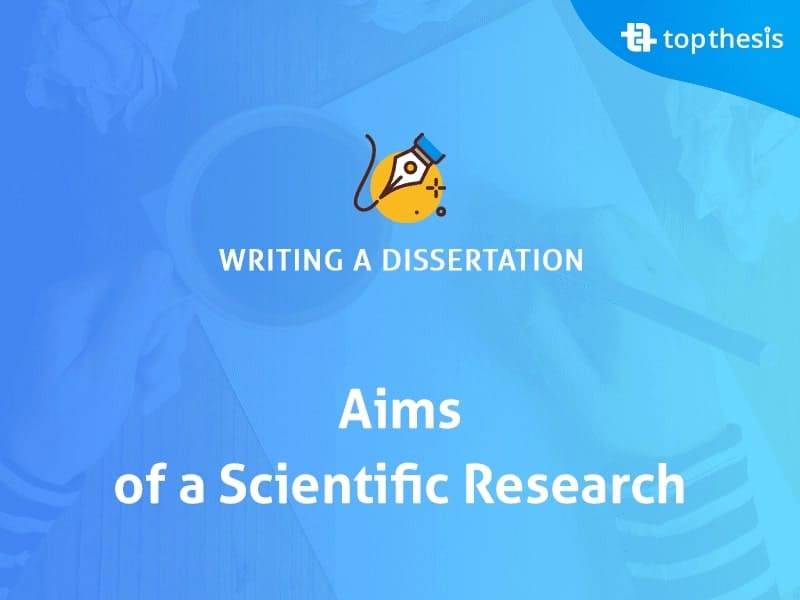
Learning about Research Methodology: The Aims of a Scientific Research
In general terms, science is concerned with finding answers to questions and gaining knowledge about the universe, or at least the observable aspects of it. It is possible to use a variety of research methodologies to answer these questions and acquire this knowledge. In another article, our experts will discuss the different types of designs that can be used in research. However, it is worth knowing what scientific research aims to do before looking at various designs.
Place New Order
The Aims of Scientific Research
A lot of researchers would agree that the aims of scientific research are to:
- Explain or improve understanding,
- Describe
- Predict.
Some people might say that application and control are additional goals. This article will discuss explaining and/or improving understanding, describing, and predicting.
Explaining/Improving Understanding
It could be argued that one of the most crucial goals of scientific-type research is to explain. The way to achieve this is by identifying the cause(s) of a particular phenomenon. Three important prerequisites are involved in determining the cause(s) and effect(s) of a phenomenon. These are
- understanding the covariation of specific events,
- establishing correct sequences in time order, and
- eliminating other possible causes.
- Covariation of given events i.e. the relationship(s): The variables in a phenomenon must correlate. To determine the relationship between two particular variables, it is necessary to determine whether the relationship might result from chance. The average (or non-scientist) observer is often not very good at judging whether relationships exist or are present. Therefore, it is necessary to use statistical techniques or methods to establish whether relationships exist and to test the strength of these.
- Establish correct sequence in time order (time-order precedence): If situation A is to cause situation B, then situation A must come before B. In other words, the cause precedes any effect(s).
- Eliminating other possible causes (genuine or non-spurious): If a relationship between situation 1 and situation 2 is to be non-spurious, situation 3 cannot cause both 1 and 2 in such a way that any relationship between 1 and 2 ceases to exist when 3 is taken under control.
When attempting to determine cause-effect relationships, one of the most difficult conditions to meet is being able to eliminate other credible or possible causes.
Describing
Describing refers to any procedures used for classifying, categorizing, and defining various subjects and any relationships between them. Descriptions facilitate the establishment of universals and generalizations. For example, collecting information about a large population of people allows a researcher to describe the characteristics of the average group member or the average behavior or performance of members within the group. Using observations to describe the patterns of large populations does not mean there are no significant differences between the people in the group. This means that researchers use (broadly speaking) average patterns or behaviors to try to describe events or subjects. The descriptive method alternatively allows researchers or scientists to describe their observations of one person and/or one phenomenon.
In the world of science, a description should be precise and systematic. The definitions used in the research of a scientific nature are of the operational variety. These types of definitions typically characterize qualities, concepts, and events in the form of observable-type operations or by the procedures that are used for measuring them.
Most researchers are only interested in describing items relevant to their studies. They are not usually interested in items or observations that are not relevant to their study or investigation.
| FREE Extras: | We guarantee: | Page Format: |
|---|---|---|
|
|
|
Predicting
Also, many researchers are prone to making predictions when developing their descriptions. Describing events often tends to provide a platform for predicting, sometimes in the shape of hypotheses, which are usually tentative and testable forecasts about the relationships or possible relationships that exist among or between variables. It is common for hypotheses to be developed from sets of interrelated concepts or theories that explain bodies of data and predict or forecast outcomes.
What is particularly important to researchers is predicting later or long-term performance. For instance:
![]()
![]()
![]()
![]()
![]()
![]()
- Is it possible to predict from an undergraduate’s GPA that they will do well at the graduate level?
- Is it possible to say (or predict) that cognitive biases will not occur in the case of highly intelligent people?
Is it possible to say (or predict) that people are likely to live longer if they adhere to healthy diets?
Where it is possible to use variables to predict other variables, it can be said these variables have some correlation. This exists where a variety of measures vary at the same time, making it possible to forecast the values of a particular variable when the value(s) of other variables are known.
Remember that the levels of certainty with which predictions can be made usually vary. The coefficients of correlations are used to assess the amount or level of relationship that exists between variables in respect of both the direction and strength of the possible relationship. Put another way, the coefficients of a correlation are the factors that determine how measures co-vary and how well.
